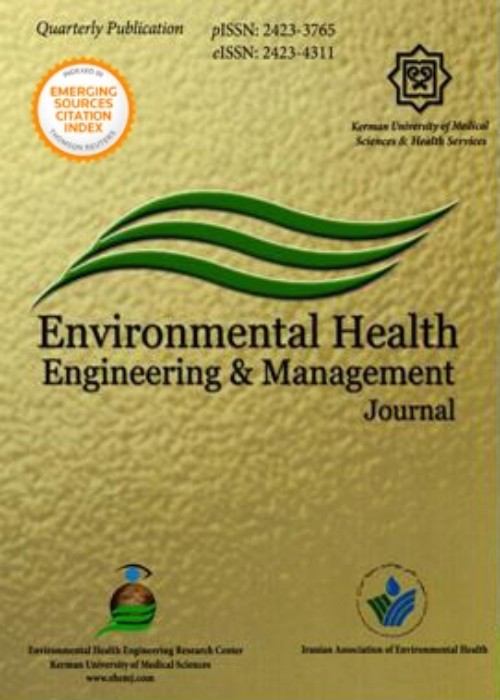Organoleptic and palatability properties of drinking water sources and its health implications in Ethiopia: a retrospective study during 2010-2016
Author(s):
Article Type:
Research/Original Article (دارای رتبه معتبر)
Abstract:
Background
This retrospective study aimed to investigate the physicochemical properties of drinking water sources in Ethiopia and compare the water quality with the health-based target. For this purpose, the water quality database of Ethiopian Public Health Institute (EPHI) from 2010 to 2016 was used.
Methods
The concentration and other properties of the water samples were analyzed according to the Standard Methods of Water and Wastewater analysis. Quality control and quality assurance were applied in all stages following our laboratory standard operation procedures (SOPs).
Results
The concentration of the selected parameters varied based on the type of water sources. The mean concentration of turbidity was higher in spring water (21.3 NTU) compared to tap (12.6 NTU) and well (3.9 NTU) water sources. The mean concentration of total dissolved solids (TDS), electrical conductivity (EC), sodium (Na+), and sulfate (SO4-2) was found to be higher in spring water sources than tap and well water sources. Comparably, the concentration of hardness, calcium, and magnesium was found to be higher in well water sources than spring and tap water sources. The bivariate analysis indicated that out of 845 analyzed water samples, more than 50% of the samples from Oromia region had turbidity, pH, TDS, hardness, Ca++, K+, and Na+ within an acceptable limit. In addition, the logistic regression analysis showed that water quality parameters were strongly associated with the type of water sources and regional administration at P < 0.05.
Conclusion
More than 80% of the samples analyzed from drinking water sources were in agreement with WHO guidelines and national standards. However, the remaining 20% specifically, pH (25%), calcium (20%), hardness (18.1%), TDS (15.5%), and turbidity (13.3%) analyzed from improved water sources did not comply with these recommendations. Due to objectionable or unpleasant taste, people may force to look for alternative unprotected water sources that lead to health concerns.Keywords:
Language:
English
Published:
Environmental Health Engineering and Management Journal, Volume:5 Issue: 4, Autumn 2018
Pages:
221 to 229
magiran.com/p1915543
دانلود و مطالعه متن این مقاله با یکی از روشهای زیر امکان پذیر است:
اشتراک شخصی
با عضویت و پرداخت آنلاین حق اشتراک یکساله به مبلغ 1,390,000ريال میتوانید 70 عنوان مطلب دانلود کنید!
اشتراک سازمانی
به کتابخانه دانشگاه یا محل کار خود پیشنهاد کنید تا اشتراک سازمانی این پایگاه را برای دسترسی نامحدود همه کاربران به متن مطالب تهیه نمایند!
توجه!
- حق عضویت دریافتی صرف حمایت از نشریات عضو و نگهداری، تکمیل و توسعه مگیران میشود.
- پرداخت حق اشتراک و دانلود مقالات اجازه بازنشر آن در سایر رسانههای چاپی و دیجیتال را به کاربر نمیدهد.
In order to view content subscription is required
Personal subscription
Subscribe magiran.com for 70 € euros via PayPal and download 70 articles during a year.
Organization subscription
Please contact us to subscribe your university or library for unlimited access!


